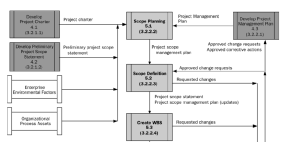That’s the question posed by James Brown (here). He points out that the PMBOK Guide 4th Edition no longer discusses the Triple Constraint — yes, I was shocked it was missing too! He wonders if the PMBOK Guide:
…is not a standard if it is always changing!… PMI is at risk of devaluing the PMP certification because now you have project managers certified on different sets of terms. When an organization hires a newly certified PMP based on the fourth edition of the PMBOK. they may not know the term triple constraint. A standard doesn’t have to be perfect, but a standard must be a standard to effectively serve its purpose!
In this case, I agree that the loss of the term “triple constraint” is pointless. It is a powerful way to highlight the choices that one needs to make among competing priorities. Why not elaborate the concept or point out its limitations instead of dropping it?
However, I challenge the idea that a standard cannot be “always changing.” For example, should there only be one edition of the Merck Manual or various ANSI standards?
While we should avoid change for change’s sake, project management is still trying to codify the common sense Dr. Brown mentions. We’re a long way from having a stable project management standard, IMO.
Filed under: PMO | Tagged: Dr. James Brown, PMBOK Guide, PMBOK Guide 3rd Edition, PMBOK Guide 4th Edition, standards | 5 Comments »








 There have always been a few in-apt or questionable glossary terms included in the PMBOK Guide‘s glossary. But in particular, the persistence of the
There have always been a few in-apt or questionable glossary terms included in the PMBOK Guide‘s glossary. But in particular, the persistence of the 


